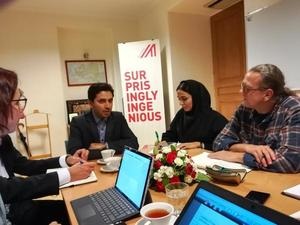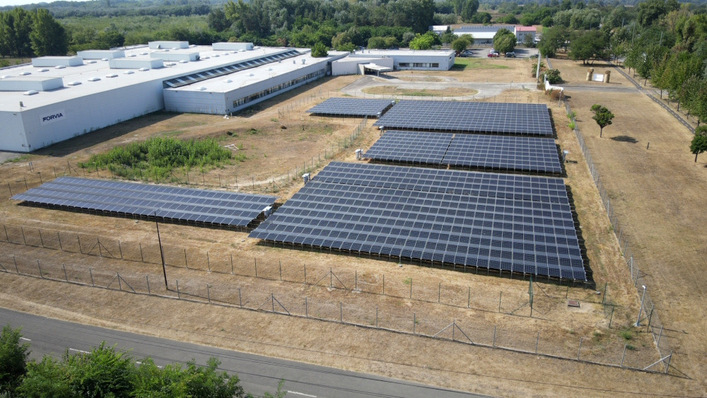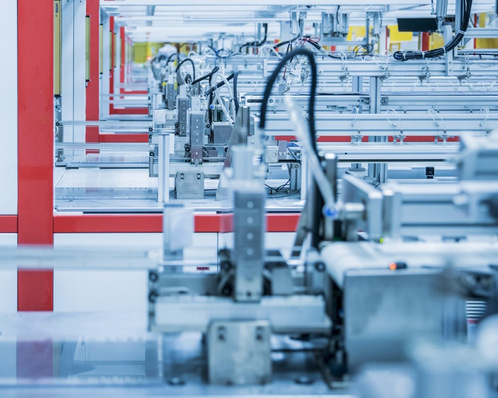With feed-in tariffs between 8.2 and 20.5 cents / kWh (3,200-8,000 IRR), the Iranian government is promoting photovoltaics. It has only recently been extended from five to 20 years, with the remuneration falling to 70% after 10 years. In peak times in summer the FIT is even extended up to a factor 4.5 to meet the high and growing electricity demand. By 2020, the installed capacity of renewable energies, especially solar power and wind power, will be expanded to at least 5 GW according to government plans. In addition, around 10 GW hydropower is already installed. Last year around 100 MW of renewables including 30 MW solar have been installed. Until March 2018 another 600 MW renewables including 60% PV are expected. Jafar Mohammadnejad Sigaroudi from the State Agency for Renewable Energies (SUNA) underlines the importance of "creating jobs, increasing value added and diversifying energy supplies" at a discussion in the Austrian embassy in Tehran. By generating and using more renewable energy for the growing domestic power demand, the government plans to increase the export of oil and gas in neighboring countries.

Additional tax incentives
Special economic zones such as in Rafsanjan (150,000 inhabitants, Kerman province, 1,800 m altitude) provide additional tax incentives for corresponding investments. A 1.2 MW solar park was inaugurated last week by the Provincial Governor. It was realized within six months by the Austrian company group KPV Solar as a joint venture with their Iranian company daughter. The investment sum amounted to around EUR 1 million and was completely equity financed. The quality of the installation as pile driving, grounding or cabling is quite impressive, as pv Europe could see. Local installer Mehrabad Renewable Energy cooperated with different subcontractors. “With this 1.2 MW photovoltaic system in southern Iran, we are very satisfied. The climatic extreme conditions of the Kerman desert require a lot of our equipment. However, the performance is excellent and the expected earnings are even exceeded”, Benjamin Fischer, Area Sales Manager, Business Unit Solar Energy, at Fronius International said. The performance is monitored through the Fronius webportal. 38 Fronius Eco 27 inverters, 4,560 panels from Austrian Kioto Solar and 1,140 piles from Alumero (Austria) are installed.

Expected ROI of 4-5 years – yield of 1.900 kWh/kW
With around 1.900 kWh/kW, the expected yield is almost twice as high as in Germany or Austria. 330 days a year, the sun is shining in Iranian regions like Kerman. "We expect a return on invest within four to five years," says Gerhard Rabensteiner, Managing Director of KPV Solar. The electricity of the solar park is remunerated at 12 cents/kWh including inflation compensation every six months through a 20-year PPA with the country`s largest private utility. Rabensteiner announced plans to build further 6 solar parks with 10 MW each in the industrial zone within the coming months. For 10 years, exemption from corporation tax (25%), and no import duties have to be paid. In addition, there is a rail connection to the largest Iranian container port in Bandar Abbas in southern Iran. Several companies, including a Chinese steel processor, have meanwhile started operation within the special economic zone.

More than 3,700 applications for PV rooftop systems
In the meantime, however, local companies are also interested to invest outside the special economic zone in solar power. Rabensteiner reports that a logistics company wants to equip its roof with 2x5 MW photovoltaic "made in Austria". In total, more than 3,700 applications for smaller PV rooftop systems have been received in the region since the announcement of the feed-in tariffs, according to an employee of the state grid operator. He pointed out that in Iran, due to the high network density (electrification rate 98.4 percent), a grid connection of the PV systems in most areas is easily possible. On the sidelines of the opening ceremony, Peter Prasser, Managing Director of Austrian based Kioto Solar, announced plans to build a module production in Iran due to the strong demand.

Actively involved in international cooperation
However, a hurdle for investments are still the difficult international payment transactions. The Austrian ambassador, Stefan Scholz, however, expressed confidence that this will improve in the foreseeable future. At the same time, Iran is actively involved in sharing experiences about renewables on an international level, as SUNA Director of Planning Sigaroudi emphasizes. The country belongs to one of the founding members of the IRENA (International Renewable Energy Agency) and the feed-in tariff was designed according to the German model. Scientists from the Technical University (TU) Berlin are currently supporting Iran in building a market for renewable energies through vocational education and training. A "Green Energy Center of Iran" is under construction and is funded by the International Climate Protection Initiative of the German Federal Ministry of the Environment.
A major challenge for the energy transition in the country though are the high subsidies for fossil fuels of around 80 billion USD yearly, as Seyed Mehdi Mohaghegh, CEO of KPV Solar Iran elaborates. Electricity rates are as low as 600 IRR/kWh, that’s around only 1,5 Eurocents/kWh. (HCN)
Learn more about solar modules
Stay informed, get our free newsletter twice a week, register here
More useful information:
http://www.pveurope.eu/News/Markets-Money/Intersolar-Summit-Iran-Promising-but-challenging-PV-market
https://www.pveurope.eu/solar-modules/exciting-time-solar-power-middle-east







